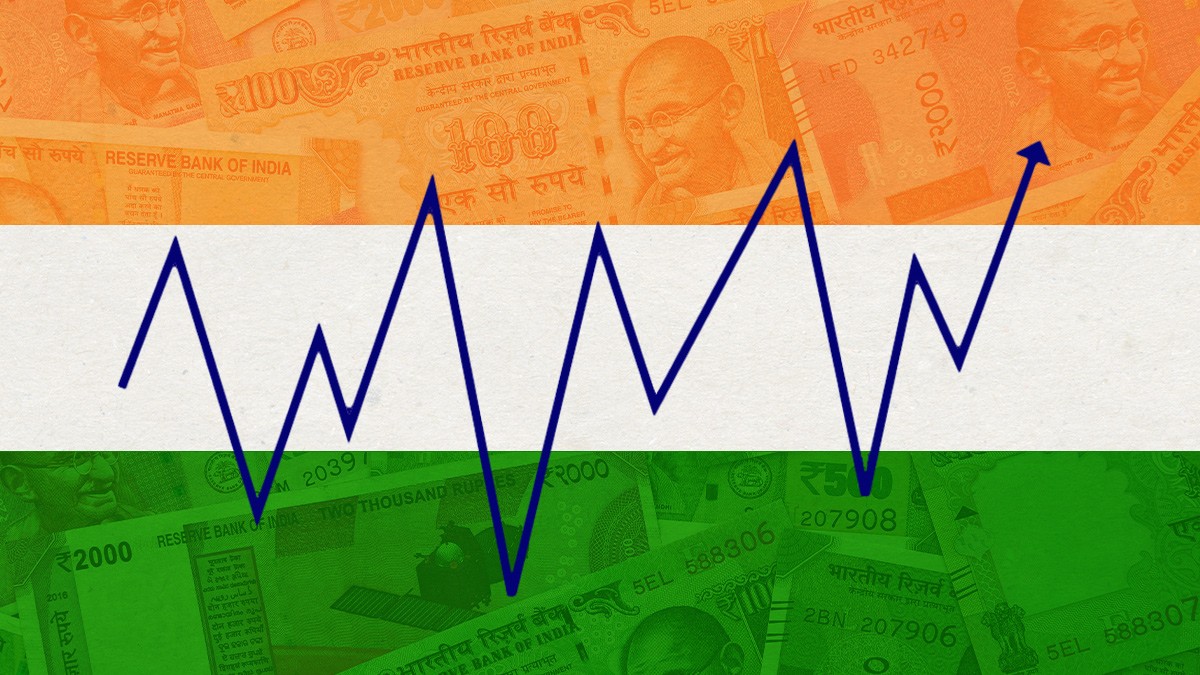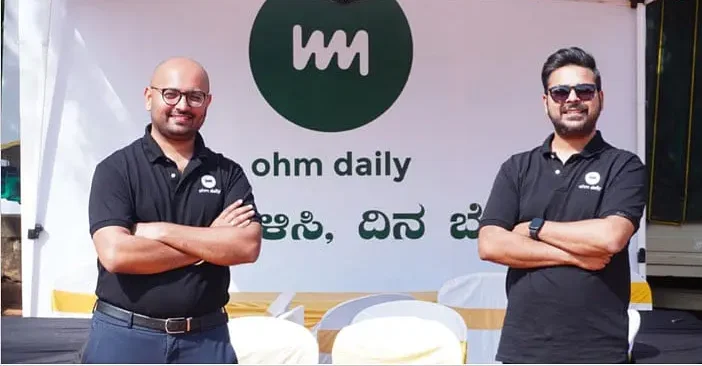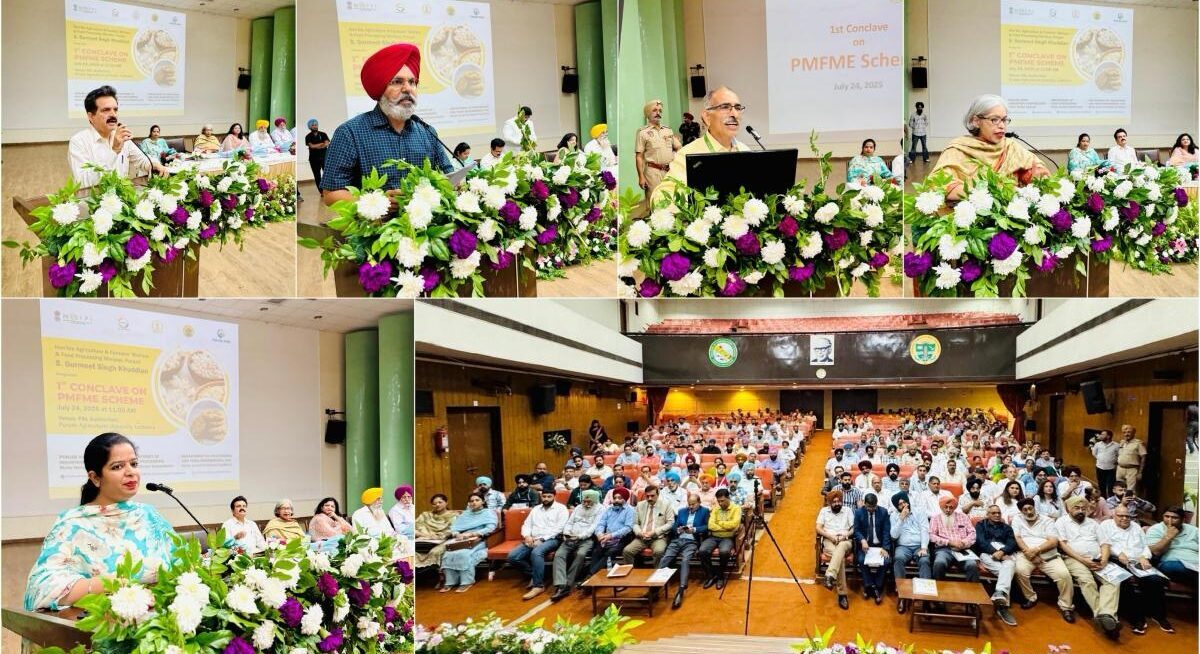Subhash Chandra’s journey from a small-town high school dropout to a billionaire media baron is the stuff of business legend. Best known as the founder of Zee TV and the Essel Group, Chandra transformed India’s media and entertainment landscape by breaking the government’s television monopoly and pioneering private satellite TV. Over five decades, he built a sprawling empire spanning television, film, packaging, theme parks, and more, all while navigating dramatic highs and lows.
This profile traces Chandra’s life, from his humble beginnings and entrepreneurial gambits to his rise as a television pioneer, his ventures beyond media, his foray into politics, and the challenges and controversies he faced along the way. It also examines his leadership style and lasting legacy in shaping modern Indian media.
Early Life and Entrepreneurial Beginnings
Born on November 30, 1950, in Adampur, a village in Haryana, Subhash Chandra was raised in a traditional business family. His grandfather, Jagannath Goenka, was a grain trader and moneylender, and from an early age Chandra absorbed lessons in commerce at his side. As a teenager, Chandra’s world turned upside down when the family business collapsed under heavy debt, reportedly owing around ₹3.5 lakh and they could no longer afford his education. In 1965, at just 15 years old, he dropped out of school to help repay the family’s debts and keep the business afloat. Armed with little more than grit and ₹11 in his pocket, the young Chandra dove into work, determined to turn his family’s fortunes around.
Chandra’s first break came in the late 1960s through a chance encounter with an official of the Food Corporation of India (FCI). Impressed by the teenager’s resolve, the FCI manager offered him a contract to clean and polish grains so they would meet the high standards required by the Indian Army. This opportunity enabled Chandra to revive his family’s grain trading business without significant capital, a creative solution that not only paid off debts but also set him on a path of entrepreneurial resourcefulness.
By the 1970s, Subhash Chandra had broadened his ventures well beyond grain. In 1976, when India faced a grain storage crisis, he pitched a simple but effective idea: storing food grains outdoors under large polythene sheets instead of in scarce warehouses. The FCI accepted his solution, giving Chandra a lucrative contract and launching him into the tent-making and packaging business, he began buying polythene in bulk and turning it into tents to cover millions of tons of grain.
He also set up a packaging company called Lamina Packers to produce laminated packing materials for pharmaceuticals, started a plant to manufacture empty gelatin capsules, and even acquired a small hand tools factory. Each new venture taught Chandra valuable lessons in operating with minimal capital, battling bigger competitors, and identifying niche opportunities – themes that would define his career.
In the early 1980s, Chandra achieved his first major industrial success. Sensing an opportunity to modernize consumer-goods packaging, he founded Essel Packaging in 1982 with the aim of replacing old-fashioned aluminum toothpaste tubes with new laminated “squeeze” tubes. It was an uphill battle, he faced technical hurdles and initial losses, but Chandra persisted with a long-term vision.

The effort paid off: Essel Packaging (later known as Essel Propack) took off and eventually became the world’s largest manufacturer of laminated tubes, supplying major brands and operating in over a dozen countries. Flush with this success, Chandra’s appetite for new ventures only grew. In 1989, he acquired 753 acres of land in Mumbai’s Gorai area to build Essel World, India’s first international-style amusement park. The park initially struggled to attract crowds, teaching Chandra early on about the importance of infrastructure and consumer access. When research revealed that poor roads and high entertainment taxes were deterring visitors, he responded by considering investments in roads and dreaming up a new venture that would bring entertainment directly into people’s homes. Little did he know this insight would soon lead him to revolutionize Indian television.
Breaking the Doordarshan Monopoly: Launch of Zee TV
By the early 1990s, India’s airwaves were dominated by Doordarshan, the state-run broadcaster. Chandra recognized a huge untapped market for private entertainment television in India’s newly liberalizing economy. In 1992, defying the odds and regulatory constraints, Subhash Chandra launched Zee TV, India’s first Hindi-language satellite TV channel. The birth of Zee TV was a landmark moment that broke Doordarshan’s monopoly and ushered in the era of cable and satellite television in the country. Chandra’s initiative “revolutionized the Indian television industry, breaking the monopoly of state-owned Doordarshan and ushering in an era of private broadcasting”.

Setting up a private TV channel was no simple task at the time, Indian laws did not yet permit domestic private broadcasting. Ever the entrepreneur, Chandra devised a clever workaround. He incorporated his TV venture in Hong Kong and partnered with Asia Satellite Telecommunications (AsiaSat) to beam content into India from outside its borders. Initially starting with just three hours of Hindi programming a day, Zee TV’s modest broadcast soon expanded to six hours, and quickly struck a chord with viewers starved for fresh content. Chandra kept production costs low, reportedly about ₹30,000 per hour, allowing Zee to churn out soap operas, music shows and movies cheaply and build a profitable model. The response was explosive: within six months of its October 1992 debut, Zee TV was reaching some 12 million homes and had become “the talk of the town” as India’s new viewing obsession.
Zee TV’s early success attracted international attention – and competition. In 1993, media baron Rupert Murdoch’s News Corp acquired Star TV (AsiaSat’s Hong Kong-based partner), which suddenly made Murdoch a stakeholder in Chandra’s broadcast platform. Murdoch, seeing that over half of Star’s 20 million Asian viewers were tuning into Zee’s channel, began eyeing a larger share of the Indian market.
What followed was a tense partnership-turned-rivalry between Chandra and Murdoch. Facing pressure from Star (which began introducing its own Hindi channels despite an agreement to focus on English content), Chandra initially sold a 49% stake in his holding company Asia Today to News Corp to raise funds and maintain access to satellite capacity. But relations soon soured as Murdoch’s Star TV started breaching their understanding and aggressively going after Hindi viewership. Murdoch even made an eye-popping $2 billion bid to buy out Zee (far above its $500 million valuation), which Chandra resisted.
The clash culminated in a legal battle in London and a settlement in 1998: Chandra bought back Murdoch’s shares for $180 million, ending the alliance and restoring Zee to full Indian control. This high-stakes episode proved Chandra’s determination to keep his empire independent. Having navigated Murdoch’s challenge, Zee Telefilms (as the company was then known) never looked back.
Through the 1990s and 2000s, Chandra expanded Zee from a single channel into a network of channels that catered to nearly every audience segment. Zee TV spawned sister channels in Hindi and regional languages, covering genres from news and movies to music and sports. By the 2010s, the Zee network comprised around 90 channels reaching an estimated 1.3 billion viewers across 170+ countries.
Chandra had firmly established himself as India’s premier media mogul, often dubbed the “Rupert Murdoch of India,” albeit one who had outfoxed Murdoch on his home turf. Importantly, Chandra’s audacity in launching Zee paved the way for India’s entire private television boom. In the wake of Zee TV’s success, numerous other private channels (from Star Plus to Sony Entertainment Television) entered the fray, transforming India’s media landscape and offering viewers an abundance of choices that were unthinkable in the Doordarshan-only era.
Building the Essel Group Empire
While Zee TV was the crown jewel of Subhash Chandra’s portfolio, it was only one part of his rapidly diversifying Essel Group. Throughout the 1990s and 2000s, Chandra methodically built Essel Group into a sprawling conglomerate with interests spanning media, entertainment, packaging, infrastructure, education, and more. Under his leadership, the group’s enterprises often pioneered their sectors in India, reflecting Chandra’s knack for being ahead of the curve.
After consolidating Zee’s initial success, Chandra extended his media dominance into new delivery platforms. In 1994, he founded Siti Cable (later Siti Networks), one of India’s first cable TV distribution companies, to ensure Zee’s programs could reach viewers even in smaller cities via local cable operators. Less than a decade later, as technology shifted, he bet on direct-to-home satellite television: in 2003, Essel Group launched Dish TV, which became India’s first DTH service. This move once again put Chandra ahead of competitors, as Dish TV brought digital satellite channels directly to consumers’ rooftops and revolutionized how Indians watched television.
Chandra also ventured into print media. In 2005, in partnership with the Bhaskar newspaper group, he launched DNA (Daily News & Analysis), an English-language daily in Mumbai, aiming to challenge the city’s entrenched Times of India. The newspaper battle was fierce – DNA incurred heavy initial losses – but Chandra persisted, and for a while DNA carved out a space in Mumbai’s media scene. (Ultimately, DNA shut down in 2019 amid financial pressures, illustrating the turbulent nature of the news business.)
Beyond media and communications, Essel Group’s footprint under Chandra included an eclectic mix of ventures. The packaging business (Essel Propack) continued to thrive globally. The success of Essel World amusement park led the group to develop Water Kingdom in the 1990s, one of Asia’s largest water parks. Chandra also made forays into infrastructure, such as road projects and urban development, and even launched India’s first online lottery business in the early 2000s (Pan India Network’s Playwin).
The group entered education with initiatives like Zee Learn, which runs schools and training centers. At its peak, Essel Group employed over 10,000 people and had an annual revenue of around $4 billion. Chandra’s empire-building was characterized by a willingness to diversify aggressively, whenever he spotted a gap in the market, he was quick to fill it, whether it was family entertainment, news, or new technology.

However, the rapid expansion also brought significant risks, which Chandra embraced but later had to reckon with. Some ventures didn’t pan out or took longer to turn profitable. By the late 2010s, for instance, Essel’s ambitious investments in infrastructure projects had saddled the group with enormous debt, straining its core media business. The next section explores how these challenges tested Chandra’s resilience.
Challenges and Controversies
As meteoric as Subhash Chandra’s rise has been, he has also weathered his share of storms. His career has been punctuated by daunting financial challenges and controversies that generated no small amount of public scrutiny. Through it all, Chandra’s responses to crises have revealed much about his tenacity – and the tougher side of running a media empire.
One of the earliest major controversies erupted in 2012, when Chandra’s flagship news channel Zee News became embroiled in a headline-grabbing scandal. Two senior editors of Zee (including the Zee News head) were arrested on charges of attempting to extort ₹100 crore from industrialist and MP Naveen Jindal’s company in exchange for suppressing negative news coverage.
The sensational case, which saw audio tapes of alleged bribery discussions made public, led to Delhi Police questioning Subhash Chandra himself about whether he was aware of his employees’ activities. Investigators initially treated Chandra as an accused, though he denied wrongdoing and Zee News claimed it was being framed. The “Zee-Jindal extortion” saga eventually quieted down after Jindal’s side and Zee reached a settlement, but it left a blemish on the network’s reputation and underscored the ethical minefield media barons can find themselves in.
The biggest challenge of Chandra’s career, however, came from financial troubles in the late 2010s. After years of breakneck expansion, Essel Group found itself over-leveraged and struggling to service its debts. The group’s push into capital-intensive infrastructure and energy projects proved particularly costly. By 2019, Essel was reportedly on the hook for ₹110 billion (about $1.6 billion) in debt, and the liquidity crunch became dire.
Subhash Chandra suddenly faced a “classic bind: liquidating assets in a weak market to repay loans”. In a bid to rescue his empire, Chandra took dramatic steps. He began selling off prime assets, including a large chunk of his stake in Zee Entertainment Enterprises, the family jewel, to raise cash. In July 2019, U.S. fund Invesco Oppenheimer agreed to buy 11% of Zee Entertainment, infusing ₹42 billion that Chandra plowed into debt repayment. He also sold solar energy assets for another ₹13 billion. These moves together paid off about half the group’s debt.
Despite these efforts, the crisis took a personal toll on Chandra’s standing in the corporate world. Zee’s stock price plunged nearly 40%, eroding much of his net worth. In November 2019, under pressure from lenders and regulators, Chandra resigned as chairman of Zee Entertainment, the company he had founded, as required by listing regulations after he ceded a sizeable stake.
He remained on the board as a non-executive director, but it was a humbling moment: the media baron had to loosen his family’s grip on the enterprise that defined his success. In 2020, Zee’s board honored him with the title of Chairman Emeritus, an honorary position acknowledging his contributions even as day-to-day control shifted to professional management.
The troubles didn’t end there. In 2020, Essel Group defaulted on certain bond payments (₹616 crore on non-convertible debentures), affecting hundreds of thousands of small investors. And in the ensuing years, Indian regulators scrutinized Chandra and his companies more closely.
In June 2023, the Securities and Exchange Board of India (SEBI) issued a stinging order accusing Subhash Chandra and his son Punit Goenka (Zee’s CEO) of siphoning off funds from the listed company. SEBI’s interim order barred both Chandra and Goenka from holding any directorial or key managerial positions in listed firms, citing evidence of fund diversion through affiliated entities.
The allegation, for example, highlighted how Chandra in 2018 had pledged a Zee asset to a bank as collateral for loans to an Essel Group affiliate, without board approval. Chandra and his son vehemently denied wrongdoing and challenged the order. India’s appellate tribunal temporarily stayed the ban, allowing investigations to continue. But the episode further tarnished Chandra’s corporate image, painting a picture of governance lapses amid the struggle to keep his companies afloat.
In another twist, a high-profile deal that was meant to secure Zee’s future fell apart amid these controversies. In late 2021, Zee Entertainment announced a planned merger with Sony Pictures Networks India, a move touted to create a media behemoth combining Zee’s channels with Sony’s portfolio. The deal was widely seen as Chandra’s family seeking a graceful exit by merging into a larger entity (with Chandra’s son set to lead the merged company).
However, with the SEBI investigation cloud hanging overhead, Sony called off the merger in January 2024, ending two years of negotiations. The collapse of the $10 billion merger was a major disappointment and left Zee Entertainment’s path forward uncertain.
Through all these trials, legal battles, debt restructurings, and management shake-ups, Subhash Chandra has maintained a characteristically stoic stance. He often emphasizes that entrepreneurs must take setbacks in stride. “Don’t be overjoyed when you meet success… don’t be depressed if you meet failure,” he has said, noting that he’s learned more from downturns than from triumphs. Indeed, Chandra’s ability to survive near-bankruptcy in his youth and rebound from adversity has been a defining trait.
Even after the recent setbacks, he has claimed to have settled the vast majority of Essel’s debt and expressed confidence that the group will recover. Such resolve has helped Chandra retain a loyal base of supporters, though skeptics point out that some of his troubles were self-inflicted by overextension.
Political Foray and Public Life
Never one to shy away from new arenas, Subhash Chandra extended his influence to the political stage in the 2010s. In 2016, he was elected to India’s Rajya Sabha (Upper Parliament House) as an independent candidate from the state of Haryana, with backing from the Bharatiya Janata Party (BJP). The media magnate-turned-MP brought his business acumen to Parliament, and he aligned with the ruling BJP’s policies on many issues.
Chandra’s entry into politics was seen by some as an extension of his long-standing proximity to the nationalist ideology, in his autobiography The Z Factor, he revealed that as a young man he had been involved with the Rashtriya Swayamsevak Sangh (RSS, the BJP’s parent organization) and he credited those years with instilling discipline and values in him.
During his six-year term in the Rajya Sabha (2016–2022), Chandra was not a front-line political figure but he was active in parliamentary committees and discussions related to media, entrepreneurship, and national development. He often leveraged his background, advocating for industry-friendly policies and entrepreneurship. In public forums and on his eponymous television program, the Dr. Subhash Chandra Show, he took on the role of a mentor, sharing business advice and life lessons with young Indians.
The show, launched in 2015 on Zee Media’s channels, featured Chandra interacting with live audiences, reflecting his belief that media personalities have a responsibility to guide and inspire the next generation.
Chandra’s political journey, however, had its bumps. His 2016 Rajya Sabha victory itself was mired in drama, he won by a narrow margin after a controversy in which some opposition legislators’ votes were disqualified due to use of the wrong pen, sparking allegations of foul play (though the result stood).
In 2022, as his term neared completion, Chandra made a bid for re-election to the Rajya Sabha, this time from the state of Rajasthan (again with BJP support). That attempt ended in defeat, as he lost the vote to an opposition-backed candidate. With that, Chandra stepped back from active politics, at least for the time being.

Despite no longer holding office, Subhash Chandra remains well-connected politically and continues to espouse his views through media outlets. His close ties to the BJP have sometimes drawn criticism, with opponents accusing Zee Media under his watch of pro-government bias. Chandra has brushed off such critiques, asserting that he has always believed in a strong, self-reliant India, a philosophy that dovetails with the current government’s ethos. In any case, Chandra’s stint in politics added another dimension to his multifaceted career, reinforcing his image as a national figure whose voice carries weight in both boardrooms and the halls of power.
Awards and Recognitions
Subhash Chandra’s pioneering work and impact on Indian industry have earned him numerous accolades over the years. As early as the late 1990s, within a few years of Zee TV’s launch, he was honored as Ernst & Young’s Entrepreneur of the Year (1998) and named Business Standard’s Businessman of the Year (1999) for his achievements in building a media empire.
In 2011, the International Academy of Television Arts & Sciences bestowed Chandra with the prestigious International Emmy Directorate Award, recognizing his role in transforming India’s television landscape. He joined the ranks of global media luminaries with this honor, underlining how far Zee’s influence had spread beyond India.
Chandra has also received awards highlighting his leadership in business and entertainment. In 2004, FICCI (India’s premier industry chamber) named him Global Indian Entertainment Personality of the Year, reflecting Zee’s emergence as a global brand. He received a Lifetime Achievement Award at the CASBAA Asian pay-TV industry convention in 2009.
A year later, in 2010, he was inducted into the Indian Broadcasting Hall of Fame for his continuing contribution to the industry. Beyond media, academic institutions have recognized Chandra’s entrepreneurial zeal: in 2013 he was awarded an Honorary Doctorate in Business Administration by the University of East London for his contributions to global business.
Throughout his career, Chandra has been colloquially known as one of India’s great “Media Moguls”, a title earned not just through wealth but through the undeniable influence he wielded in shaping what India watches. In 2015, the World Trade Center Mumbai honored him for his contributions to trade and industry.
While he notably has not (as of 2025) received a Padma Award (India’s civilian honors), his name is frequently mentioned among the country’s most respected entrepreneurs. Perhaps a reflection of his diverse endeavors, Chandra often carries the honorific “Dr. Subhash Chandra”, after multiple universities (in India and abroad) conferred honorary doctorates upon him in the 2010s.
Leadership Style and Legacy
Subhash Chandra’s leadership style can best be described as visionary, bold, and resilient. A self-made man who rose from village beginnings, Chandra has consistently demonstrated a willingness to take risks and a knack for spotting opportunities where others see obstacles. He famously doesn’t shy away from uncharted territory, whether it was launching a private TV channel when none existed, or entering new sectors like DTH, lotteries, or infrastructure. “If you see a need in the market, take the risk and fill it” has essentially been his mantra.
Chandra also preaches perseverance: he has often said that failures and tough times are the greatest teachers, instilling humility and spurring improvement. This mindset helped him navigate setbacks that might have sunk other entrepreneurs, from early business failures to near bankruptcy to corporate power struggles. By staying level-headed in both success and failure, Chandra has managed to reinvent himself and his companies repeatedly over the decades.
Another hallmark of Chandra’s approach is innovation driven by customer insight. A telling anecdote comes from the Essel World experience: when attendance lagged at his new theme park, Chandra personally dived into understanding the Indian consumer. Realizing that long travel times and high costs were barriers for middle-class families, he pivoted to a completely different solution, bringing entertainment into living rooms via television.
This ability to listen to the market and adapt became a cornerstone of Zee’s content strategy as well. In the 1990s, while state TV stuck to staid programming, Zee TV offered spicy soaps, film music shows, and talent contests that resonated with popular tastes (all on a shoestring budget). Chandra empowered a generation of creative professionals to push boundaries, and in doing so nurtured India’s burgeoning TV production industry.
Chandra’s leadership has also been characterized by a strong family and values-oriented ethos. He credits his grandfather for teaching him honesty, courage and commitment in business, and those who have worked with Chandra often speak of his emphasis on trust and loyalty. Indeed, Essel Group was very much a family-run empire: Chandra’s brothers and later his sons, Punit Goenka and Amit Goenka, have held top roles in various group companies.
This close-knit management brought strengths, quick decision-making and unified vision, though it also attracted criticism in later years regarding governance (a common challenge in family-led firms). Chandra has shown the ability to bring in professional managers when needed, but he has never been far from the center of strategic decisions.
In terms of public persona, Subhash Chandra cultivated an image as both a hard-nosed businessman and a patriotic nation-builder. He often reminds people that he “empowered India’s voice” by giving Indians their own private channels and breaking foreign dominance in media. His venture Zee News took on a nationalistic tone, and Chandra himself entered public service via Parliament, blending business and national interest. Through the Subhash Chandra Foundation, he has engaged in philanthropy focusing on education, healthcare and disaster relief, striving to give back to society in meaningful ways.
These efforts reflect his belief that enterprises have social responsibilities beyond profit, a view he’s articulated by urging media to produce “objective, meaningful content” that educates even as it entertains.
Chandra’s legacy in Indian media is monumental. He will forever be remembered as the man who kick-started India’s cable TV revolution in the 1990s, liberating viewers from the clutches of a single state broadcaster. The diverse and dynamic TV ecosystem India enjoys today, hundreds of channels in multiple languages, freewheeling news networks, 24×7 entertainment and niche content, can be traced back in large part to Chandra’s trailblazing Zee TV experiment. He proved the viability of private television in India, inspiring a generation of media entrepreneurs to follow. In recognition of this, industry bodies and peers have called him a pioneer who changed the game.
At the same time, Chandra’s journey also serves as a cautionary tale about the perils of overreach. His rise and fall and reinvention show the cyclical nature of business empires. After achieving incredible heights – from global expansions to billionaire status, he faced humbling setbacks that forced him to retrench. Yet, even in semi-retirement, Dr. Subhash Chandra continues to be an influential figure. As Chairman Emeritus of Zee, he remains a respected elder statesman in media circles.
Younger media professionals and entrepreneurs often seek his guidance, and he still speaks at events about entrepreneurship and leadership. With his sons now steering the group into the future, Chandra’s story is also one of succession, the passing of the torch to a new generation, even as the patriarch watches from the wings.
In the final analysis, Subhash Chandra’s life encapsulates the quintessential rags-to-riches story intertwined with the saga of India’s post-liberalization boom. A village youth who started with nothing more than a few rupees became a titan of industry who reshaped how 1.3 billion people entertain and inform themselves. His audacious bets from launching India’s first satellite channel to taking on global giants earned him fame, fortune, and a fair share of adversities. And his legacy is firmly etched in the annals of Indian media history as a visionary entrepreneur and a true innovator who, against all odds, let India “see TV” in an entirely new light.
Timeline of Key Milestones in Subhash Chandra’s Career
| Year | Milestone |
|---|---|
| 1950 | Birth: Subhash Chandra Goenka is born on November 30 in Adampur, Hisar district of Haryana, into a business family. |
| 1965 | End of Education: At age 15, drops out of school due to family financial troubles and joins the family’s grain trading business, which is burdened by debt. |
| 1968–69 | First Break: Secures a contract from FCI to polish rice and barley for Army rations, reviving the family business without major investment. |
| 1976 | Diversification: Suggests using polythene tents for grain storage during a crisis, wins contract from FCI. Founds Rama Associates and ventures into tent manufacturing and packaging materials. |
| 1982 | Essel Packaging: Launches Essel Packaging to produce laminated toothpaste tubes, pioneering the concept in India. Over the 1980s, Essel Packaging grows into a global leader in laminated tubes. |
| 1989 | Essel World: Opens Essel World in Mumbai, India’s first modern amusement park, marking Essel Group’s entry into entertainment and leisure. |
| 1992 | Zee TV Debut: Zee TV is launched as India’s first Hindi private satellite channel, breaking Doordarshan’s monopoly. Initially broadcast from Hong Kong in partnership with Star TV, it quickly becomes a household name. |
| 1993–98 | Murdoch Partnership: Rupert Murdoch’s News Corp acquires Star TV (1993) and partners with Chandra. Zee expands rapidly but faces competition from Star; by 1998 Chandra ends the partnership, buying back News Corp’s stake to retain independence. |
| 1990s | Zee Network Growth: Through the late ’90s, Chandra launches multiple channels under the Zee brand (Zee News, Zee Cinema, regional channels, etc.), building one of India’s largest TV networks. |
| 1994 | Cable Distribution: Establishes Siti Cable (later Siti Networks) to distribute cable television, among India’s first multi-system cable operators. |
| 2003 | Dish TV: Introduces Dish TV, India’s first direct-to-home (DTH) satellite TV service, expanding Essel Group’s media distribution platforms. |
| 2005 | Print Media: Launches DNA (Daily News & Analysis) newspaper in Mumbai (with Dainik Bhaskar Group) to challenge established print players. (DNA runs for 14 years before shutting in 2019.) |
| 2016 | Political Entry: Elected to the Rajya Sabha (Parliament’s Upper House) from Haryana as an independent candidate backed by the BJP. Continues as Zee/Essel chairman while serving as an MP. |
| 2019 | Debt Crisis: Essel Group faces a liquidity crunch under ₹110 billion debt. Chandra sells ~21% stake in Zee Entertainment and other assets to repay lenders. In November, he resigns as Chairman of Zee Entertainment amid these efforts. |
| 2020 | Transitions: Zee Entertainment designates Chandra as Chairman Emeritus (honorary) after his exit from the board. Essel Group defaults on certain bond payments during the pandemic (May 2020), highlighting financial strains. |
| 2022 | Rajya Sabha Bid Fails: Attempts re-election to Rajya Sabha from Rajasthan as a BJP-backed independent but loses the race, ending his term in Parliament. |
| 2023 | Regulatory Scrutiny: SEBI alleges fund diversion from Zee; in June, it bars Subhash Chandra and son Punit from board positions in listed companies pending investigation. (A tribunal later stays the order, but probes continue.) |
| 2024 | Merger Called Off: A long-planned merger between Zee Entertainment and Sony Pictures’ India unit collapses in January 2024, with Sony pulling out of the $10bn deal amid governance concerns. |
From a grain trader’s son to the father of Indian private television, Subhash Chandra’s journey is a blueprint of bold vision. He didn’t just build Zee, he reshaped how India consumes media.
His legacy, like his channels, will continue to broadcast for generations.
Also Read: Earthful: Sisters Leading India’s Plant-Based Wellness Rise
























